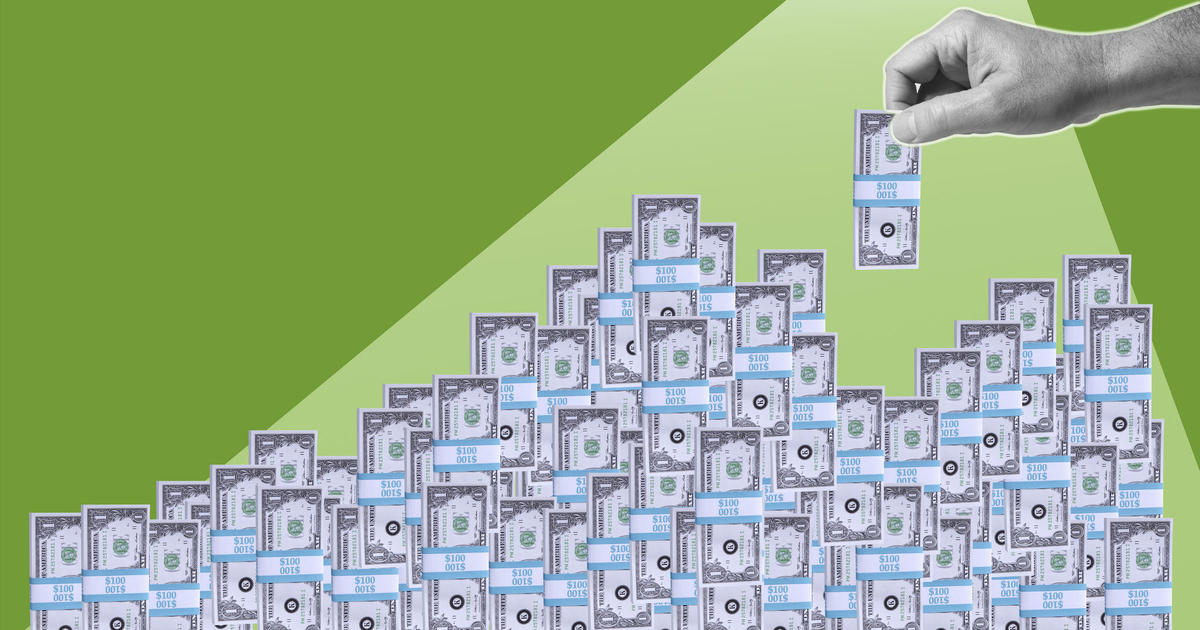Record share of Americans are raiding their 401(k) plans due to hardship
A record share of Americans tapped their 401(k) plans last year for so-called hardship withdrawals, a financial lifeline that can help people who are strapped for money handle emergencies like medical care or staving off eviction.
The share of 401(k) participants taking hardship withdrawals from their accounts rose to 2.4% last year, up from 1.9% in 2021, according to financial services firm Fidelity. That represents the highest share of hardship withdrawals recorded at Fidelity, which noted the share typically ranges from 2% to 2.3% annually.
- 6 ways to make extra money in retirement
- Inflation making it tough for Americans to save for retirement
The rise in hardship withdrawals comes after a year that has seen the highest inflation in four decades, along with rising interest rates, factors that have made it more expensive to borrow money, and afford all manner of goods and services. Hardship withdrawals are only approved for a small set of financial circumstances that point to serious financial distress, noted Mike Shamrell, vice president of thought leadership, workplace investing, at Fidelity.
"They are jammed up, they are in a bind. This isn't something that people take lightly," he said. "Hardships aren't meant for if your daughter gets engaged and you have to set aside money for their wedding."
Vanguard also recorded a rise in hardship withdrawals last year, the company said. About 2.8% of participants in its plans made hardship distributions in 2022, up from 2.1% in 2021.
What qualifies as "hardship"
The IRS allows hardship withdrawals for a limited set of conditions, including medical care, tuition for the worker or their family members, payments to avoid eviction or foreclosure, funeral costs, and expenses to repair damage to the employee's principal residence.
The tax agency notes that consumer purchases, such as buying a car or a boat, aren't considered an immediate and heavy financial need and wouldn't be approved.
Because hardship distributions are linked to emergencies such as a funeral or damage to one's home, the nation's economic headwinds may not be the primary factor behind their rise, Shamrell said. In recent years, IRS rules have made it easier for Americans to take a hardship withdrawal, such as a 2018 regulatory amendment that allowed workers to withdraw not only their own contributions, but also the funds contributed by their employer in a company match.
"Given that it's now easier to request a hardship withdrawal and that automatic enrollment is helping more workers save for retirement, especially lower-income workers, a modest increase is not surprising," Vanguard said in an analysis of retirement trends.
Hardship withdrawals may get even easier to tap in 2023 with the new Secure 2.0 retirement regulations signed into law by President Biden in December. The new rules allow employees to self-certify that they meet the hardship criteria and will only take out the amount they need to cover their financial emergency. Previously, employees had to prove to their employer or their plan sponsor that they met the requirements.
When withdrawing money makes sense
While retirement experts generally recommend that workers avoid borrowing from their 401(k)s, taking a hardship withdrawal makes sense if the alternative is dire, such as getting evicted from your home, Shamrell noted.
"This is money that they have in their account — they aren't borrowing against future earnings or taking out a 401(k) loan or a payday loan," he said. "The last thing we want to make them do is feel even worse about tapping their 401(k) when they are in an emergency situation."
Although more workers are tapping their retirement savings, they are taking out smaller amounts, Fidelity found. The typical 401(k) hardship withdrawal in the first quarter of 2021 was $3,900, but that dropped to $2,200 in the fourth quarter of 2022.
"People are only taking what they need, so that's a positive," Shamrell said.
Meanwhile, it's important to remember that there are penalties for raiding your 401(k). Workers who are younger than 59 1/2 must pay a 10% early withdrawal penalty, while the withdrawal is taxed as ordinary income (for taxpayers of all ages). The upside is that workers don't have to repay the hardship withdrawal, unlike with 401(k) loans, which have to be paid back within a few years.
On the flip side, the share of workers taking 401(k) loans, or when people borrow from their accounts but must repay the money, has decreased since the start of the pandemic, Fidelity found. In the third quarter of 2022, just under 17% of retirement plan participants had an outstanding loan, down two percentage points from two years earlier, Fidelity said.
"People are becoming much more aware of the fact that their 401(k) is not something that should be viewed as a way to cover expenses, that they might want to cover that from other sources," Shamrell said.



